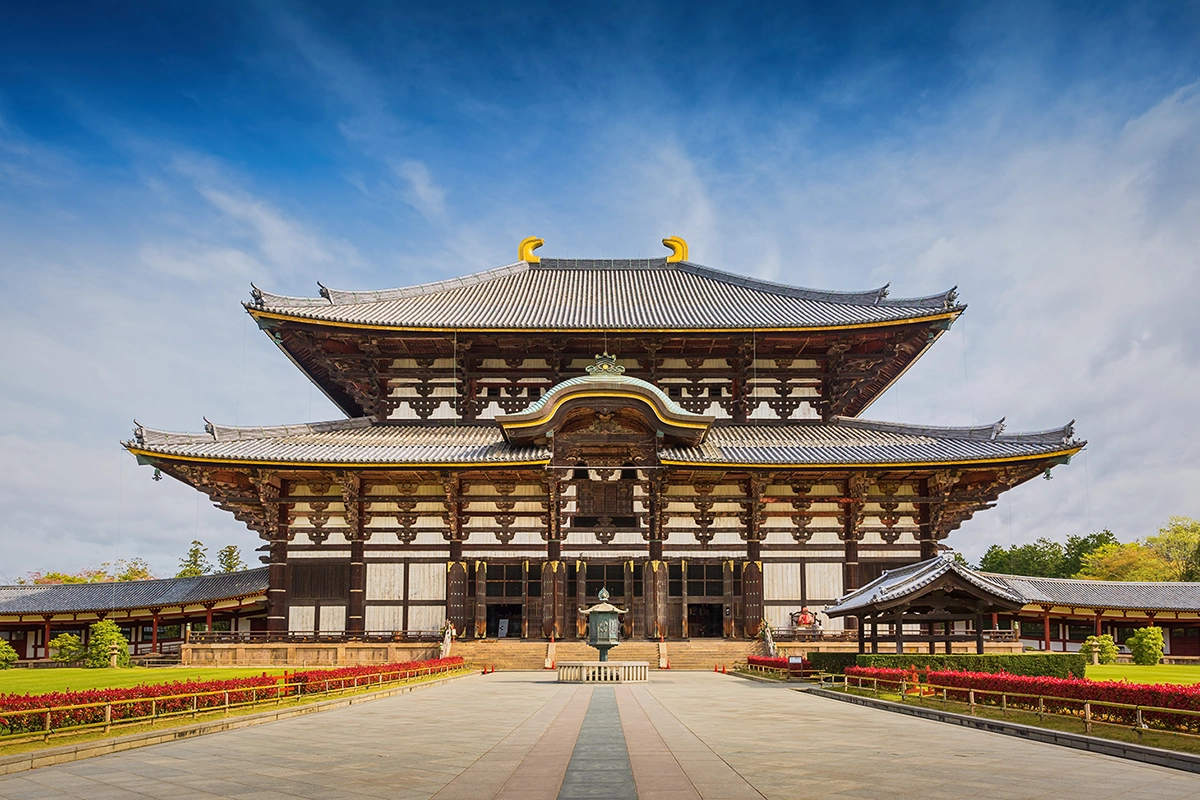Eternal Serenity Amidst Ancient Grandeur: Tōdai-ji, Japan’s Iconic Temple
Nestled in the heart of the enchanting city of Nara, Japan, lies a place that breathes with history and spirituality – Tōdai-ji. This UNESCO World Heritage Site, with its monumental presence and profound significance, stands as a testament to the splendor of ancient Japanese Buddhism. Embark on a journey through time and tranquility as we explore the exquisite treasures of Tōdai-ji.
The spiritual heart of Nara, Tōdai-ji was constructed in the 8th century, a testament to the enduring legacy of Buddhism in Japan. As you approach the temple, you’ll be captivated by its sheer size and the profound historical weight it carries. The temple’s expansive grounds are shrouded in an aura of serene beauty, a world away from the bustling pace of modern life.
At the core of Tōdai-ji lies its most remarkable jewel – the colossal bronze Buddha statue. Entombed within the sacred walls of the Daibutsuden, or Great Buddha Hall, this masterpiece, affectionately known as Daibutsu, stands a staggering 16 meters tall and weighs an astounding 500 tons. It is, without a doubt, the largest bronze Buddha statue in the world. Daibutsu’s ethereal presence exudes an overwhelming sense of serenity, captivating all who behold it.
The intricate craftsmanship and meticulous detail that went into creating this awe-inspiring statue serve as a testament to the skill of Japanese sculptors. As you stand in front of Daibutsu, you’ll be humbled by the centuries of devotion that brought this divine work of art into existence.
Yet Tōdai-ji’s splendor extends beyond its colossal Buddha. The temple complex boasts other structures of immense historical and spiritual importance. The Hokke-do, or Lotus Sutra Hall, is a designated national treasure, and it shelters an 11-faced Kannon statue, believed to be one of the oldest Buddhist statues in Japan. As you wander through its hallowed halls, you’ll feel the ancient spirits that have long sought solace within these sacred walls.
Another hidden gem within the temple grounds is the Nigatsu-do, the Hall of the Second Month. This building is renowned for its annual Omizutori ceremony, a tradition that has been observed for over twelve centuries. To be present during this event is to experience a timeless connection to Japan’s rich cultural heritage, where history and spirituality intertwine.
Tōdai-ji is more than just an architectural and artistic marvel; it is a living testament to the spiritual journey of an entire nation. Over the centuries, it played a pivotal role in the spread of Buddhism throughout Japan. Even today, it remains a revered site for Buddhist worship and pilgrimage. The temple’s allure transcends borders, attracting millions of visitors annually, including a significant number of international tourists.
As you walk through the temple’s intricate corridors and expansive gardens, you’ll encounter pilgrims and worshippers deep in contemplation and prayer. The air is thick with incense, and the gentle sound of ringing bells resonates through the temple. The experience is nothing short of enchanting, a journey into the depths of Japanese spirituality.
The sheer presence of Tōdai-ji stands as a bridge between the past and the present, a place where ancient traditions coexist harmoniously with the modern world. It’s a place where you can step back in time while remaining firmly grounded in the present.
In conclusion, Tōdai-ji, the jewel of Nara, transcends mere description. It is an immersion into history, an awakening of the soul, and a connection to the enduring spirit of Japan. Whether you are a devoted pilgrim or an intrigued traveler, a visit to Tōdai-ji will leave an indelible mark on your heart. As the centuries pass, Tōdai-ji remains a beacon of serenity, inviting all who visit to share in its eternal grace and profound beauty.
